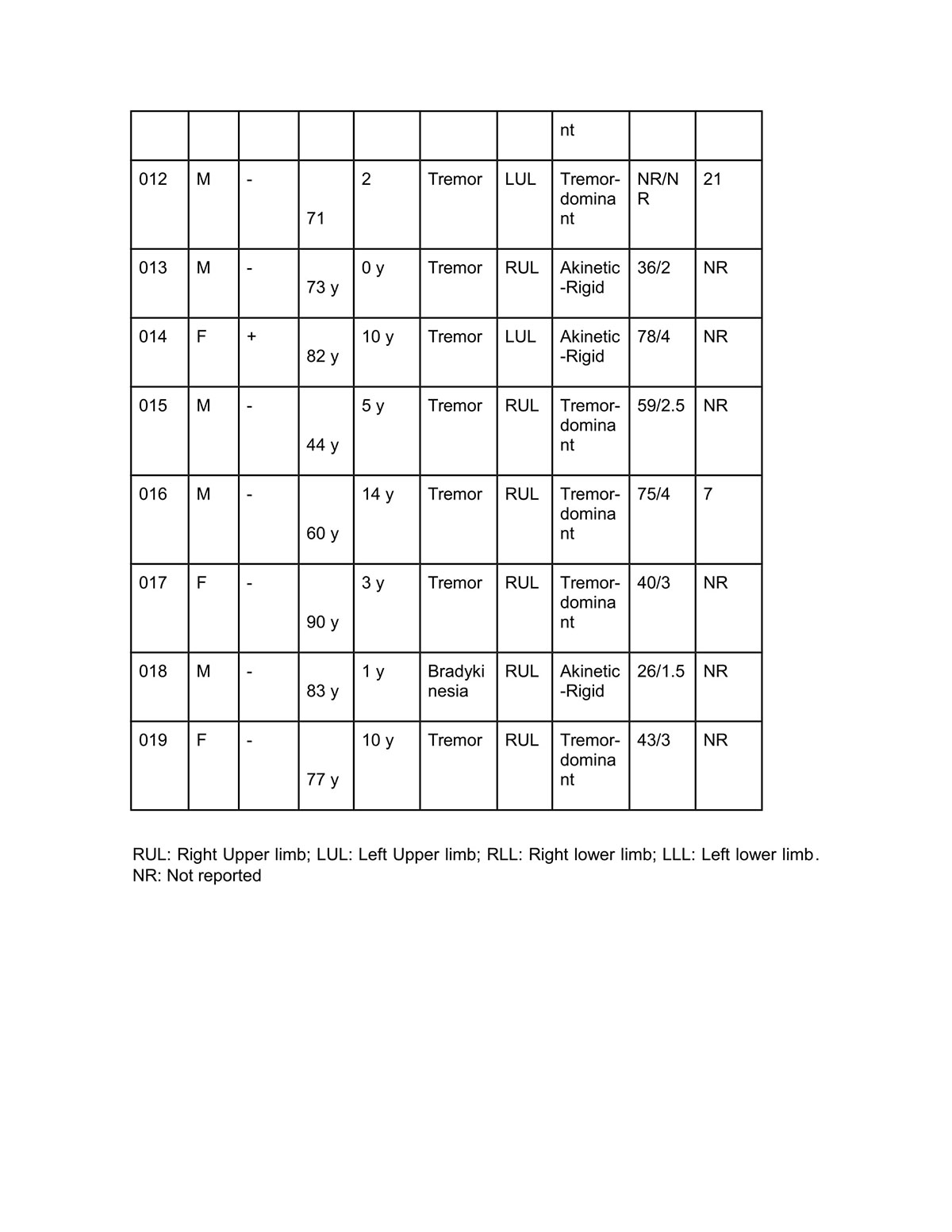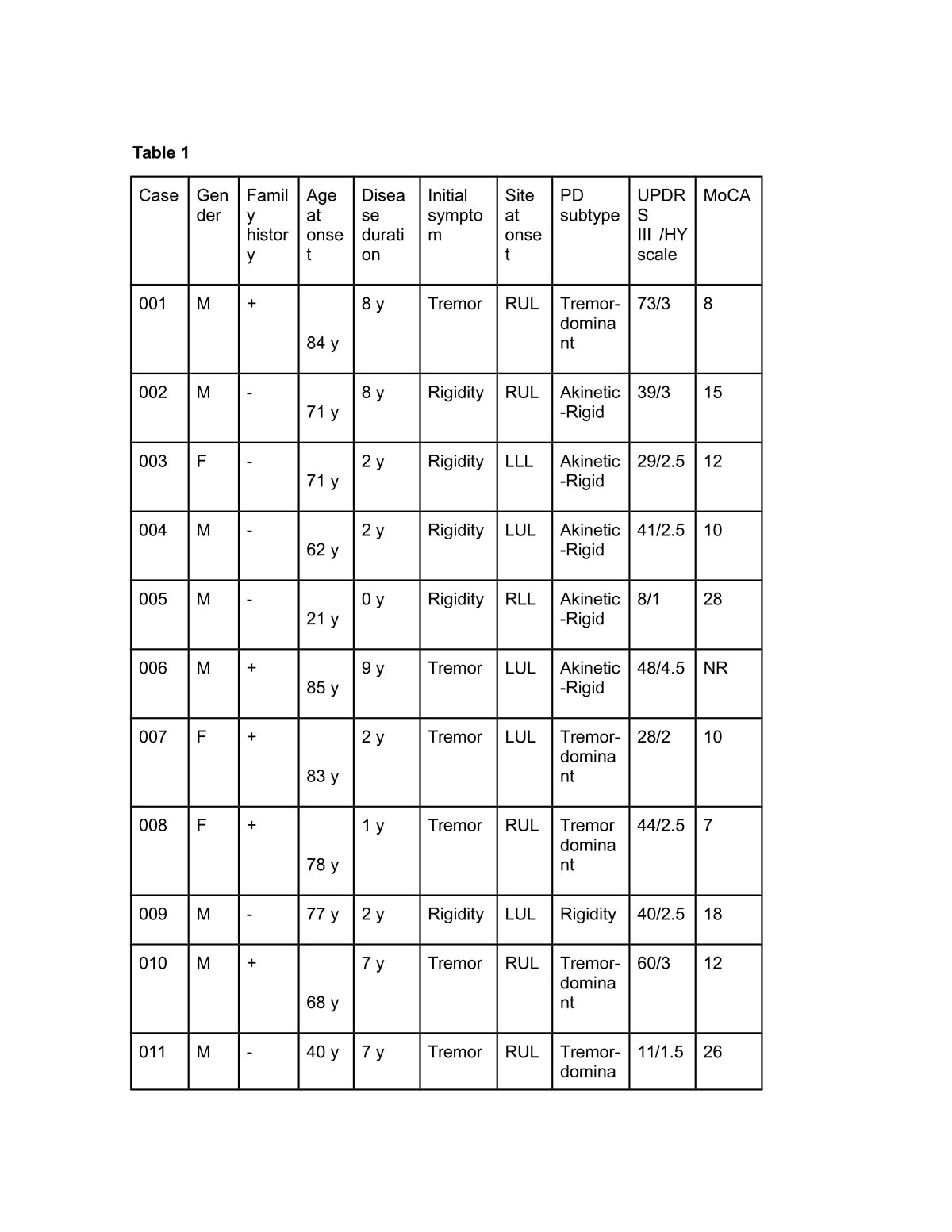Session Information
Date: Wednesday, September 25, 2019
Session Title: Epidemiology
Session Time: 1:15pm-2:45pm
Location: Les Muses, Level 3
Objective: To determine the prevalence of Parkinson disease in a district of central highlands of Peru
Background: The overall prevalence of PD among adults worldwide is ~0.3%. However, prevalence rates differ across regions, depending on sociodemographic factors, environment-gene interactions and methodological prevalence approaches. Jauja is located at central highlands in Peru mostly occupied by admixed (hispanic and Amerindian) population mostly dedicated to farming, trading and mining.
Method: A two-phase community-based study was conducted in Jauja district. During phase 1, a face-to-face survey was administered by 10 trained interviewers. The screening questionnaire included an open-ended question: “Do you know someone who has Parkinson’s disease?”, and a 9-item Screening questionnaire (9-item SQ) to select cases with parkinsonism (3), if answer “yes” to any of the questions the individual was selected for phase 2. During phase 2, positive individuals were examined by two neurologists with expertise on movement disorders for diagnosis of PD according with the United Kingdom PD Society Brain Bank diagnostic criteria. those diagnosed with PD were asked to complete a comprehensive PD questionnaire, as well as a pesticide exposure questionnaire, when applicable.
Results: From April 2018 to february 2019 we enrolled a total of 1734 individuals that completed the screening survey, 534 of them were selected for phase 2. We have been completed phase-2 neurological examination on 140 individuals (39.5%). Among 140 examined individuals, we have identified 19 subjects that fulfill the Brain Bank PD criteria (Table 1); 15 cases through the 9-item SQ survey and 4 through the open-ended question. We identified 11 cases with known diagnosis, 8 de-novo cases and 2 early onset cases. A total of 6/19 (32%) cases declared having positive PD family history. Preliminary data thus far suggest a minimum PD prevalence of 0.86% (15/1734) in residents ≥18 years (1% if considering the 4 PD cases identified through the open question). Fifteen of them lived near farming fields, but only six reported to be farmers and had used pesticides.
Conclusion: Preliminary results suggest that the PD prevalence in the district of Jauja is higher than expected. A conjunction of environmental factors, including farming habits might be modifying PD prevalence. Further studies addressing PD-related environmental and genetic factors are required.
References: 1. de Lau LML, Breteler MMB. Epidemiology of Parkinson’s disease. Lancet Neurol. 2006;5(6):525-35. 2. Pringsheim T, Jette N, Frolkis A, Steeves TDL. The prevalence of Parkinson’s disease: a systematic review and meta-analysis. Mov Disord Off J Mov Disord Soc. 2014;29(13):1583-90 3. Sevillano MD, de Pedro-Cuesta J, Duarte J, Clavería LE. Field validation of a method for population screening of parkinsonism. Mov Disord Off J Mov Disord Soc. 2002;17(2):258-64.
To cite this abstract in AMA style:
E. Sarapura-Castro, K. Milla-Neyra, S. Montano, I. Mata, M. Inca-Martinez, J. Rios-Pinto, C. Cosentino, P. Mazzetti, M. Cornejo-Olivas. Prevalence of Parkinson’s disease in a district of central highlands of Peru: Preliminary report [abstract]. Mov Disord. 2019; 34 (suppl 2). https://www.mdsabstracts.org/abstract/prevalence-of-parkinsons-disease-in-a-district-of-central-highlands-of-peru-preliminary-report/. Accessed April 1, 2025.« Back to 2019 International Congress
MDS Abstracts - https://www.mdsabstracts.org/abstract/prevalence-of-parkinsons-disease-in-a-district-of-central-highlands-of-peru-preliminary-report/


